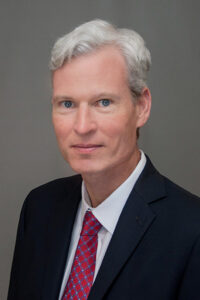DFI Traveling Lecturer
Lecture series runs from September 1 – August 31
The DFI Traveling Lecturer is a prominent industry expert selected annually to travel and present a series of lectures to university students, professional groups and industry associations. The DFI Traveling Lecturer program promotes the field of geotechnical engineering and deep foundation construction by
- Encouraging students to explore a career in the deep foundations industry
- Providing information on topics of interest to members of the industry
- Raising awareness of how DFI and its activities support the industry
Please feel free to reach out to us with any questions on our Traveling Lecturer series.
2024 - 2025 DFI Traveling Lecturer
Matthew E. Meyer, P.E., BC.GE
Langan Engineering and Environmental Services, Inc.
Matthew Meyer is a principal with Langan Engineering and Environmental Services. He is a registered professional engineer in seven states with 29 years of geotechnical engineering experience and is a Board Certified Geotechnical Engineer. His experience is diverse in project type, location, magnitude and geologic setting including experience on private sector high-rise projects, resorts, industrial and retail developments, stadium projects, airports, marinas and port developments, universities, convention centers, public sector transportation projects inclusive of projects delivered utilizing Design-Build and P3 approaches with a focus on subsurface investigative techniques, deep foundations, ground improvement, groundwater control, karst-related risk reduction or mitigation, and verification or validation through full-scale load testing, nondestructive testing techniques and performance monitoring.
Meyer has a B.S. in civil engineering from The Citadel and an M.S. in civil engineering (geotechnical focus) from Virginia Tech. He previously served as an adjunct professor in the Department of Civil Engineering at Florida International University. Meyer has served previously in numerous leadership positions at DFI including trustee on the DFI Board, trustee liaison to the Industry Wide Working Platform Working Group, trustee liaison and chair to the Augered Cast-In-Place and Drilled Displacement Pile Committee and trustee liaison to the Soil Mixing Committee. He is a past president of the Miami-Dade ASCE Branch and the 2023 Martin S. Kapp Foundation Engineering Award winner. Meyer has lectured, published, presented or co-presented 45+ publications or presentations at various conferences, seminars or journals.

2024-2025 Lecture Topics
Check back for topic summaries soon.
Geotechnical Challenges and Foundation Solutions for the Mercedes Benz Stadium
A Decade Long Journey of Geotechnical Challenges and Solutions at a Mega Resort in Variable Karst Conditions
Port of Miami Tunnel
Past to Present Day – Foundation Evolution in Miami
Experiences and a Perspective on Forensic Geotechnical Engineering
Nominate a Lecturer
Nominations from the DFI membership are accepted each year until February 1. All nominations received after February 1 will be considered the following year.
Past DFI Traveling Lecturers
DFI wishes to thank all our previous traveling lecturers for their dedication and expert insight.
Jesús Gómez, Ph. D., P.E., BC.GE • 2023-2024
Vice president of GEI Consultants
Dan Brown, Ph. D., P.E., BC.GE • 2022-2023
Chief Engineer and Senior Principal at Dan Brown and Associates
Thomas D. Richards, Jr., P.E., BC.GE • 2021-2022
Retired chief engineer and current consultant at Nicholson Construction Company
David B. Paul, P.E. • 2020-2021
Managing partner of Paul GeoTek Engineering and retired from the U.S. Army Corps of Engineers (USACE)
Willie M. NeSmith, P.E. • 2019-2020
Former chief geotechnical engineer for Berkel & Company Contractors
John R. Wolosick, P.E., BC.GE, F.ASCE • 2018-2019
Director of engineering at Hayward Baker Inc. (HBI) and past president of DFI
